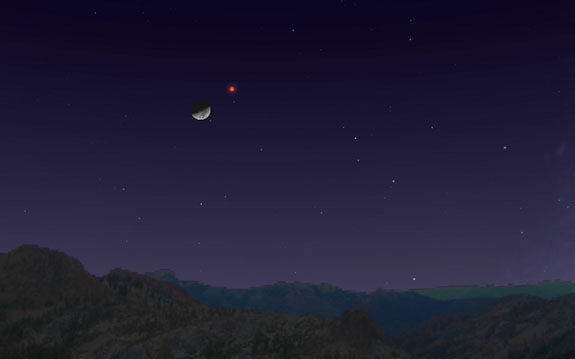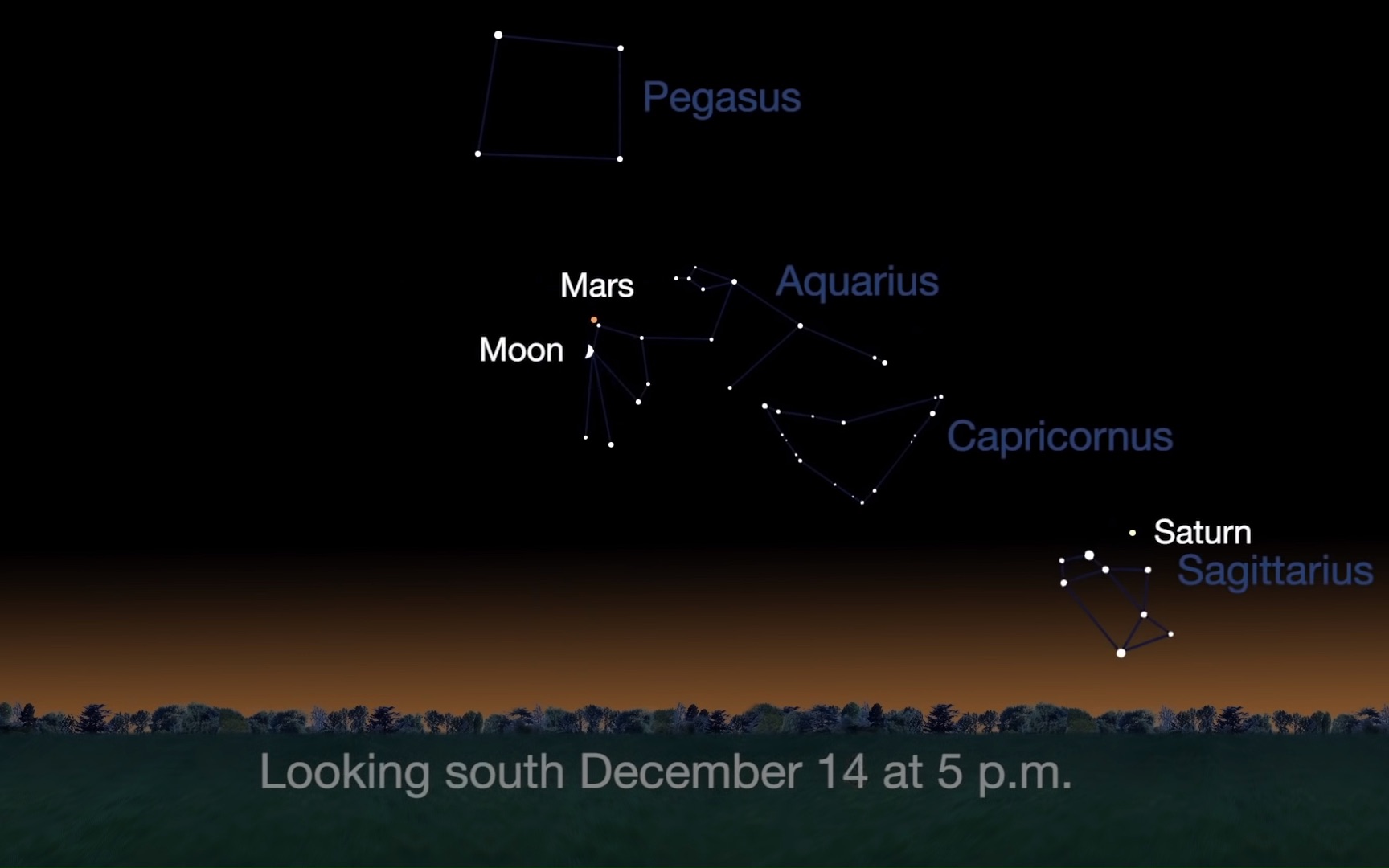See Mars Near the Moon in the Night Sky Tonight! Here's How.

The moon lights the way to the Red Planet tonight (Dec. 14) as the two objects make a close approach to each other in the evening sky.
If you gaze up at the moon after dusk, Mars will be easy to spot — weather permitting, of course — and will look like a yellow-orange star nearby. You may even spot some some "shooting stars" from the Geminid meteor shower, which peaked last night and will remain active for a few more days.
At 6:23 p.m. EST (2322 GMT), the two objects will be in conjunction. This means that they will share the same right ascension, which is the celestial equivalent of longitude. At that time, Mars will be 3.6 degrees to the north of the moon. [Best Night Sky Events of December 2018]
Their closest approach, however, will happen a couple hours after the conjunction, at 10:53 p.m. EST (0153 GMT on Dec. 15), when the two objects will be 3.4 degrees apart. To put that in perspective, your clenched fist held at arm's length measures about 10 degrees wide.
The waxing crescent moon, just one day shy of reaching first-quarter phase, will be 41 percent illuminated, while the Red Planet is shining at magnitude 0.2 — about as bright as Rigel, the brightest star in the Orion constellation.
Both Mars and the moon will be in the constellation Aquarius. Look for them above the southern horizon after sunset. For observers in New York City, the pair will set in the west at 11:21 p.m. local time. You can find out exactly when Mars (and other visible planets) rise and set from your specific location using timeanddate.com's astronomy calculator.
If you miss tonight's conjunction, you won't have to wait long for another chance to see Mars snuggle up to the moon. The two will be in conjunction once more on Jan. 12. However, they will be slightly farther apart, at a distance of 5.3 degrees. Mars also won't be as bright then. At magnitude 0.6, it will be about as bright as Hadar, the second-brightest star in the constellation Centaurus.
Breaking space news, the latest updates on rocket launches, skywatching events and more!
Email Hanneke Weitering at hweitering@space.com or follow her @hannekescience. Follow us on Twitter @Spacedotcom and on Facebook. Original article on Space.com.
Join our Space Forums to keep talking space on the latest missions, night sky and more! And if you have a news tip, correction or comment, let us know at: community@space.com.

Hanneke Weitering is a multimedia journalist in the Pacific Northwest reporting on the future of aviation at FutureFlight.aero and Aviation International News and was previously the Editor for Spaceflight and Astronomy news here at Space.com. As an editor with over 10 years of experience in science journalism she has previously written for Scholastic Classroom Magazines, MedPage Today and The Joint Institute for Computational Sciences at Oak Ridge National Laboratory. After studying physics at the University of Tennessee in her hometown of Knoxville, she earned her graduate degree in Science, Health and Environmental Reporting (SHERP) from New York University. Hanneke joined the Space.com team in 2016 as a staff writer and producer, covering topics including spaceflight and astronomy. She currently lives in Seattle, home of the Space Needle, with her cat and two snakes. In her spare time, Hanneke enjoys exploring the Rocky Mountains, basking in nature and looking for dark skies to gaze at the cosmos.

